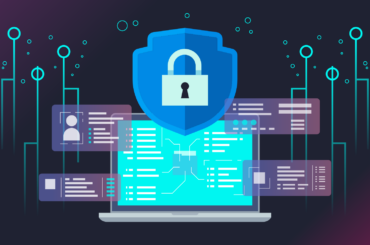When it comes to securing ecommerce websites, it is crucial to choose the right payment system. The right payment system will keep your online business secure. Ecommerce shops can make a sale at any time as they are always open. This is one reason why many small and large businesses go online. Similarly, there are hackers and other cybercriminals who make use of every opportunity to commit ecommerce fraud. They keep looking for websites and web pages for vulnerabilities they can exploit and cause as much damage as possible. They could steal banking details and other sensitive customer data or hold the ecommerce site for ransom.
Let’s learn how ecommerce fraud happens and some of the best practices for setting up secure ecommerce payments.
How Does Ecommerce Fraud Happen?
Any illegal transaction performed by third parties like hackers and fraudsters on an ecommerce platform using someone else’s credit card without that person’s knowledge is called ecommerce fraud. Cybercriminals commit such fraud by using fake credit cards or stolen credit cards, or they might also use false card information to make such transactions.
Generally, when someone makes a transaction on a website, they are making a purchase without presenting a physical card. They make a CNP (card-not-present) purchase and the website they make a transaction trusts that the person making the purchase is the actual cardholder as there is no other way to ensure that the card is not being used by anyone else other than the cardholder. CNP purchases are anonymous and so they are likely to be fraudulent as someone can use a stolen card to make an online purchase.
Ecommerce fraud happens in different ways. One of the most common ecommerce frauds is the usage of stolen credit cards, where fraudsters use stolen credit cards to make huge purchases. Another form of ecommerce fraud is card testing, which is where cybercriminals make small transactions to check if the stolen account details are valid so that they can use them to make big purchases. They could test several numbers in a day, which would result in increasing transaction fees.
Best Practices for Preventing Ecommerce Fraud and to Set up Secure ecommerce Payments
Make Your Storefront PCI Compliant
Your ecommerce store should comply with the PCI compliance standards. PCI, payment card industry compliance helps secure customer data. These compliance standards are mandated by credit card companies to secure global payments. All ecommerce websites, even the ones that accept payments rarely, also have to be PCI compliant. Requirements of PCI standards include implementing firewalls to protect customer data, utilizing antivirus software, protecting customer data that is stored through encryption, and more.
Make Sure To Add an SSL Certificate to Your Ecommerce Website
An SSL certificate is mandatory for your online storefront as this tool guarantees that the data your customers provide while shopping on your website will be encrypted. As your website will deal with your customers’ credit cards and other sensitive data like their names, address, etc., it is important to make sure hackers don’t get their hands on that data. An SSL certificate will help secure all such data and prevent hackers from stealing it by encrypting all the data transferred between your customers and your ecommerce website. Securing your ecommerce website with an SSL certificate is the best way to make sure your customers’ data is secure. Remember, it is important to purchase an SSL certificate from a trusted certificate authority. We have listed below a few SSL certificates from trusted certificate authorities that are apt for ecommerce websites.
- Comodo PremiumSSL Wildcard Certificate
- PositiveSSL EV
- GeoTrust QuickSSL Premium Wildcard
- RapidSSL WildCard
Make Sure to Use Fraud Protection Tools
Enabling fraud protection tools is one of the best ways to cut down on the number of fraudulent attempts on ecommerce sites. Credit Verification Value (CVV), Address Verification filter, and velocity filter are among the fraud protection tools you can enable on your ecommerce website to secure payments on your website. While some tools may be free, some may require a monthly fee. You can enable these tools to make your site more secure.
Collect and Store Only the Required Customer Data
It is wise to collect as little data as possible from your customers. If you collect a lot of data from your customers, you will have to lose a lot in case of a data breach or a hack. But when you only connect the data required to complete a purchase on your website, you may not be at risk as hackers can steal only what little you have. If you collect a lot of sensitive data like your customers’ Social Security numbers, etc., you and your customers will be at risk if a data breach happens. So you can avoid collecting such sensitive data. Likewise, make sure only certain people who need access to customer data have access to it and limit access to the others.
Final Word
Payment processing might seem difficult if you are new to online businesses. It is mandatory to prioritize the safety of your customers while you set up your ecommerce website’s online payment system. We hope this article helped you understand what you need to do to set up secure ecommerce payments for your business.





